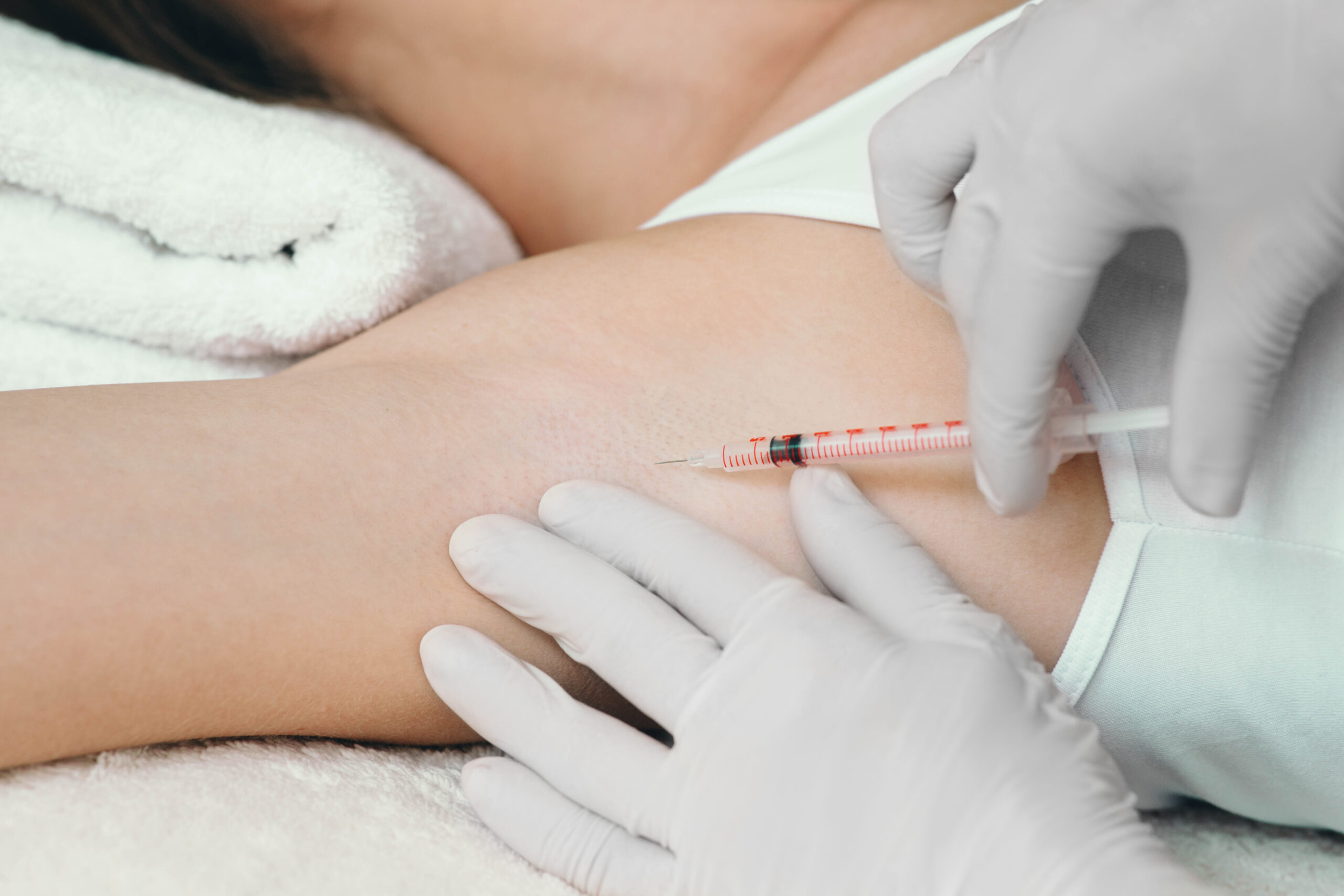Everybody sweats. We sweat when we’re hot, nervous, stressed and sometimes when we’ve overeaten. On the plus side, sweating can stave off colds and infections, open blocked pores, boost immunity and help with detoxification.
But for those who suffer from hyperhidrosis – AKA excessive sweating – (about one million Canadians), it’s never a good thing. From sweat stains and perspiration-soaked clothing to clammy and dripping hands, the problem can be debilitating and a significant driver of social anxiety.
What causes hyperhidrosis?
There are two distinct types of hyperhidrosis: primary focal and secondary generalized. For both types, overactive sweat glands are to blame but the causation and treatment can be different.
For primary focus hyperhidrosis, there is no underlying cause or medical condition nor is the sweating a side effect of treatment or medication. The excessive sweating is the medical condition. Primary focal hyperhidrosis often begins in childhood or adolescence and is a hereditary condition. It commonly often affects the hands, feet and face.
Secondary generalized hyperhidrosis is caused by an underlying medical condition or is a side effect of a treatment or medication. It’s called secondary because it is related to something else, such as diabetes or menopause. Secondary hyperhidrosis can affect other areas of the body (described as generalized areas), and people suffering from this condition may also experience sweating symptoms while sleeping.
Treatment for Excessive Sweating
Fortunately, there are effective treatments available – clinical antiperspirants, medications, microwave energy devices, lasers and even surgery. At INLIV, we offer neuromodulator injections to disrupt nerve signals to the sweat glands and reduce excessive sweating.

A typical hyperhidrosis treatment involves an average of 12 to 14 injections per underarm, though it depends upon the size of the area affected. The needles used are tiny and most patients report just a mild sting during treatment.
As is the case with most medical treatments, results vary from person to person. The severity of the condition and an individual’s response determines the treatment frequency. It takes between two and seven days for the injections to take effect. For most patients, the treatment lasts from six to twelve months.
To find out if neuromodulator injections can work for you, contact INLIV to book a consultation with one of our specially-trained physicians.


